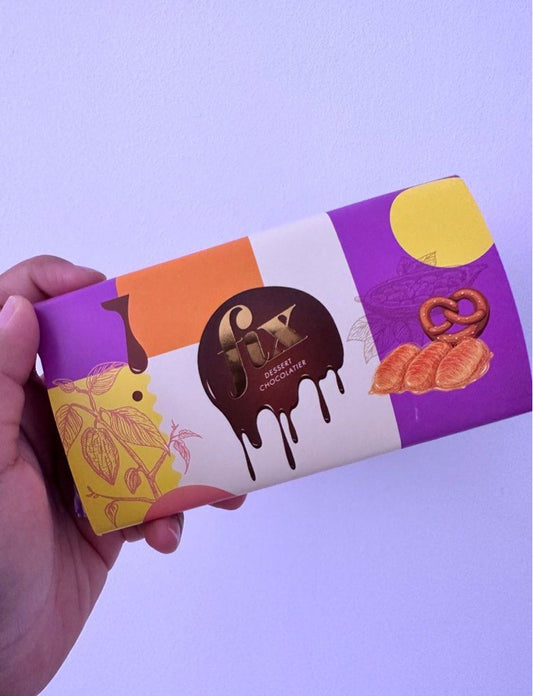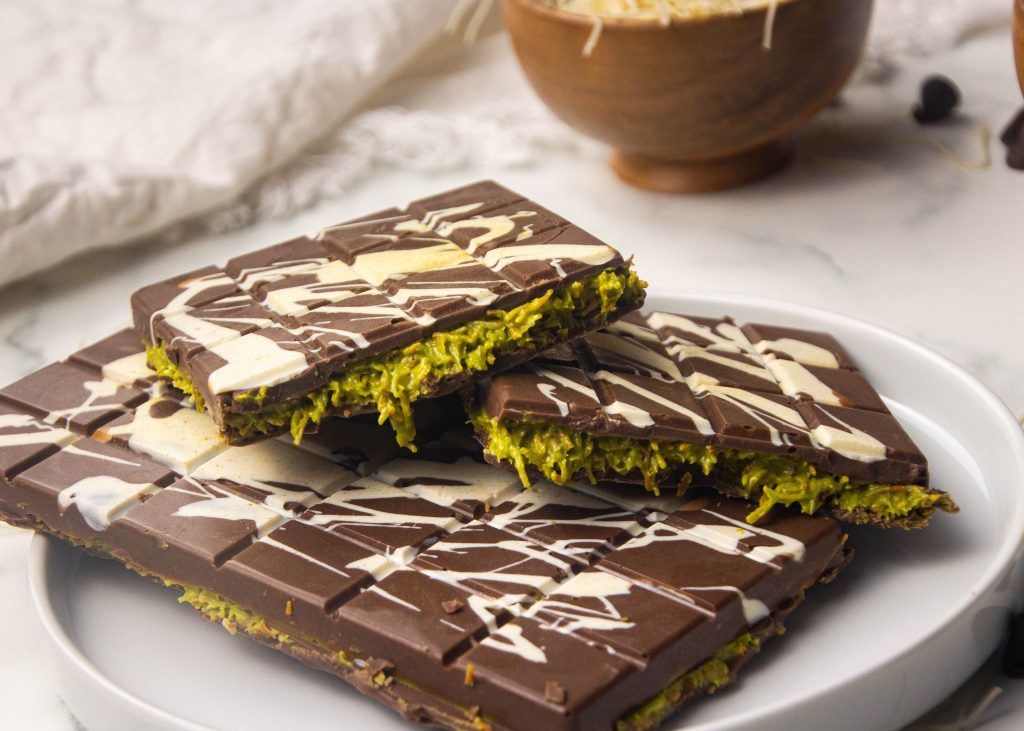Fix Dessert Chocolatier: The Ultimate Destination for Chocolate Enthusiasts
Appreciate the One-of-a-kind Quality of Handmade Chocolate Creations
The globe of handmade delicious chocolate productions uses an engaging junction of creativity and scientific research, where each confection is a testimony to the skill of the chocolatier. These distinct chocolates, crafted from meticulously sourced cacao beans, disclose a range of taste accounts formed by their geographic origins and the meticulous procedures used in their production.
The Art of Chocolate Making
 The procedure of delicious chocolate production is a delicate art that integrates both science and creative thinking. It begins with the mindful selection of high-quality cacao beans, which are sourced from various areas understood for their distinctive characteristics. The beans undergo fermentation, a crucial action that creates their taste profile and fragrance. After fermentation, the beans are dried, roasted, and cracked open to extract the nibs, which are the heart of the chocolate.
The procedure of delicious chocolate production is a delicate art that integrates both science and creative thinking. It begins with the mindful selection of high-quality cacao beans, which are sourced from various areas understood for their distinctive characteristics. The beans undergo fermentation, a crucial action that creates their taste profile and fragrance. After fermentation, the beans are dried, roasted, and cracked open to extract the nibs, which are the heart of the chocolate. As soon as the nibs are refined right into delicious chocolate liquor, the craftsmen chocolatier masterfully stabilizes the proportions of cocoa solids, cacao butter, and sugar. This process requires a deep understanding of temperature level control and timing to achieve the wanted appearance and taste. Conching, a method that refines the delicious chocolate's structure, is commonly used to eliminate any grittiness and enhance level of smoothness.
Temperature levels are meticulously monitored during the toughening up procedure, guaranteeing the chocolate obtains a glossy coating and a gratifying breeze when damaged. The last involves molding and cooling the chocolate, where creative thinking radiates via as artisans explore different forms and styles. Eventually, hand-made delicious chocolate creations mirror both the thorough craftsmanship of the chocolatier and the abundant heritage of chocolate making itself.
Taste Accounts of Handmade Delicious Chocolate
Handcrafted delicious chocolate's flavor accounts are an unified blend of the cacao's origin, refining techniques, and the chocolatier's creativity. Each region where cacao is expanded imparts unique tastes; as an example, beans from Madagascar usually display bright citrus notes, while those from Venezuela may provide earthy undertones and subtle flavor. The terroir-- making up dirt altitude, top quality, and environment-- plays an essential function in forming these unique qualities.
Handling methods more impact taste. Techniques such as fermentation and roasting can boost or diminish particular preference qualities. A careful selection of toasting temperature and period allows chocolatiers to unlock the full possibility of the cacao, bringing onward complex tastes varying from fruity to nutty, and even floral.
The chocolatier's experience in mixing different cacao varieties and integrating complementary components, such as flavors or natural herbs, includes an additional layer of depth to the taste account. fix dessert chocolatier. This creativity changes simple ingredients into a sensory experience, elevating hand-crafted chocolate beyond simple confectionery. The outcome is a rich tapestry of flavors that welcomes exploration and admiration, allowing customers to enjoy the precise workmanship behind each distinct creation
The Value of Quality Ingredients
 Just how do quality components elevate the art of chocolate-making? The structure of exceptional handmade delicious chocolate exists in the option of the finest ingredients. Costs chocolate beans, sourced from lasting farms, possess unique flavor profiles that significantly boost the delicious chocolate's intricacy. The origin of these beans influences preference, fragrance, and structure, making mindful sourcing vital.
Just how do quality components elevate the art of chocolate-making? The structure of exceptional handmade delicious chocolate exists in the option of the finest ingredients. Costs chocolate beans, sourced from lasting farms, possess unique flavor profiles that significantly boost the delicious chocolate's intricacy. The origin of these beans influences preference, fragrance, and structure, making mindful sourcing vital.In addition, high-quality sugars and natural flavorings add to the general sensory experience. Artisans frequently favor organic or minimally refined sugars to maintain the stability of the delicious chocolate's flavor. The incorporation of genuine and fresh ingredients, such as vanilla or flavors, can change a basic confection right into a premium delight.
The commitment to making use of high quality ingredients not just boosts the taste yet also shows the chocolatier's dedication to their craft. This meticulous attention to information fosters a much deeper connection in between the maker and the customer, as each bite narrates of passion and competence. Eventually, the superiority of handmade chocolate is a straight result of the ingredients chosen, emphasizing the relevance of quality in accomplishing a genuinely amazing product. When indulging in chocolate, critical customers can appreciate the distinction that phenomenal active ingredients make.

Craftsmanship and Layout Strategies
Artistry in chocolate-making transcends plain confectionery; it embodies a thorough procedure where workmanship and layout strategies play an essential function (fix dessert chocolatier). Each hand-crafted chocolate creation starts with the cautious option of high-quality active ingredients, yet it is the skilled application of various strategies that changes these ingredients right into charming confections
Workmanship involves a deep understanding of solidifying delicious chocolate to achieve the ideal shine and snap. This process calls for accurate temperature level control and timing, demanding both knowledge and experience. Furthermore, artisans frequently employ strategies such as hand-piping, molding, and enrobing, permitting one-of-a-kind forms and appearances that elevate the visual charm of each item.
Style techniques are similarly vital, as they encompass taste layering and ingenious combinations that push the limits of standard chocolate. In the realm of hand-crafted delicious chocolates, the fusion of workmanship and layout methods you can find out more not just provides indulgent treats but likewise informs a tale via each carefully crafted item.
The Experience of Sampling Chocolate
As one savors an item of delicious chocolate, the experience goes beyond simple consumption; it comes to be a multi-sensory trip that engages the taste, fragrance, and even the mind. The preliminary experience starts with the delicious chocolate's aesthetic allure-- its shiny surface area, intricate layout, and abundant shade promptly mesmerize focus.
Upon breaking the chocolate, one is greeted by a satisfying breeze, a testament to its quality and solidifying process. The taste profile unfolds slowly, usually revealing layers of complexity.
Fragrances play a crucial function in this tasting experience. The scent wafting from the chocolate improves expectancy, as the olfactory detects prepare the taste buds of what is to come. Inevitably, tasting handmade chocolate is not simply about taste; it is an expedition of artistry, craftsmanship, and the meticulous care that enters into each development, culminating in a remarkable experience that sticks around long after the last piece is delighted in.
Conclusion
To conclude, the special high quality of handmade chocolate productions depends on the complex procedures of crafting, consisting of the mindful choice of premium active ingredients and the mastery of style techniques. Each confection mirrors the virtuosity and commitment of proficient chocolatiers, causing distinctive flavor accounts that invite exploration. The sensory experience of tasting these delicious chocolates not just highlights their complexity however additionally fosters a much deeper recognition for the workmanship intrinsic in every meticulously crafted item.
These one-of-a-kind chocolates, crafted from meticulously sourced cacao beans, expose a variety of flavor accounts shaped by their geographic origins and the meticulous procedures used in their creation. Eventually, handmade delicious chocolate productions show both the precise craftsmanship of the chocolatier and the abundant heritage of delicious chocolate making itself.
Handmade chocolate's flavor profiles are an unified mix of the cacao's More Bonuses origin, processing techniques, and the chocolatier's artistry. Artisans typically like organic or minimally processed sugars to preserve the honesty of the chocolate's flavor. Inevitably, tasting handmade delicious chocolate is not simply concerning taste; it is an exploration investigate this site of creativity, workmanship, and the meticulous care that goes into each creation, finishing in a memorable experience that sticks around long after the last item is enjoyed.